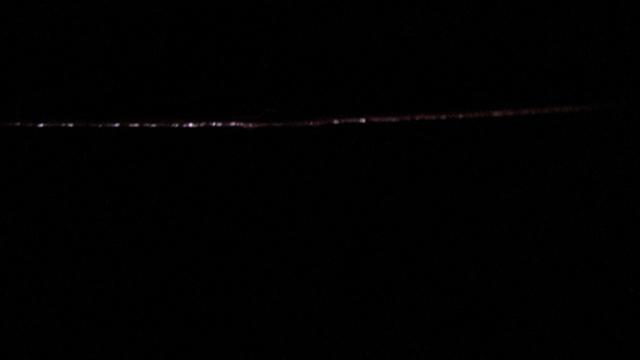
Photo: Yep, that's daylight shining through a girth weld on the Keystone XL Tar Sands Pipeline.
Members of the Tar Sands Blockade have revealed that they have photographic evidence showing faulty welds inside a mile-long segment of the Keystone XL pipeline currently under construction near Winona, East Texas.
On the morning of December 3, blockaders were shocked to find light shining through a weld precisely at the spot where they were resting, after having barricaded themselves inside the pipeline to prevent its further construction.
The property through which the pipeline was being built belonged to a multi-generational African-American family, some members of which had their land seized through the process of eminent domain, while others were paid as little as $200 compensation.
Tina Osby, a 63-year-old lifelong resident of Winona, and her mother, Annie Bircher, 85, have stated that they were never informed of the carcinogenic nature of the substances that will soon be flowing through and onto their land if regulators do not ensure the pipe is fixed and reinspected.
Upon learning of the shoddy welding work done by TransCanada - the company that is attempting to build a pipeline to transport a toxic slurry of tar sands oil 2,000 miles south from Alberta, Canada, to refineries on the Gulf Coast - Osby's family has demanded accountability and stringent regulations to avoid a catastrophic spill, akin to the Kalamazoo River tar sands spill in 2010.
Annie recounted, “I didn’t think much about it at first, and it wasn’t until after construction started that I began to wonder.”
Photos of the faulty welds were first exposed on January 31 when Tar Sands Blockade spokesperson Ramsey Sprague interrupted the annual Pipetech Americas Summit in Houston, Texas, calling into question TransCanada’s commitment to safety and regulation during a speech on pipeline safety.
Whistleblower accounts to federal officials in Canada and the United States, made by former TransCanada welding engineers and pipeline weld inspectors Evan Vokes and Michael Klink, also describe systemic negligence and malfeasance in the corporation's internal inspection and auditing process.
This is coupled with the latest news that pipeline inspection technology programmers have raised serious concerns about the efficacy of Pipeline Inspection Gauges - an industry-standard tool for locating life-threatening shoddy welds and pipe irregularities.
“Clearly, the dramatic and life-threatening weld discovered in Winona should be immediately investigated by the Pipeline and Hazardous Material Safety Administration, and the recurring themes of TransCanada’s systemic negligence of human health and environmental safety [be] considered within the broader scope of the Keystone XL Northern Segment’s consideration by the US State Department," said Sprague.
"The entire discovery only confirms the deepest, most cynical fears of affected residents near the KXL route,” he added. “Construction of all tar sands pipelines should halt immediately until the clear inability of the petrochemical industry to construct, install, monitor and maintain safe pipelines is remedied adequately in accordance with the common-sense sentiment that pipelines moving hazardous, toxic materials should not leak into peoples' homes. Period.”
This week, Tar Sands Blockade sent the photos of holes in the Keystone XL pipeline to U.S. federal pipeline safety regulators at PHMSA, demanding they investigate and fix the holes immediately.
This Sunday, February 17, tens of thousands of protesters from across the United States are expected to descend on Washington, DC in what organizers are predicting will be the largest environmental demonstration in U.S. history. Called "Forward on Climate," the rally aims to persuade President Obama to veto the Keystone XL pipeline on the grounds that burning tar sands will push the planet's climate past the breaking point.
3 WAYS TO SHOW YOUR SUPPORT
- Log in to post comments















